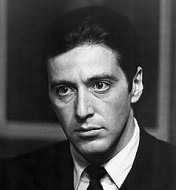
From Image to Icon

i·co·nog·ra·phy
Pronunciation: "I-k&-'nä-gr&-fE
Function: noun
Inflected Form(s): plural -phies
Etymology: Medieval Latin iconographia, from Greek eikonographia sketch, description,
from eikonographein to describe, from eikon- + graphein to write
Date: 1678
1 : pictorial material relating to or illustrating a subject
2 : the traditional or conventional images or symbols associated with a subject
and especially a religious or legendary subject
3 : the imagery or symbolism of a work of art, an artist, or a body of art
(source)
Mario Puzo's trilogy The Godfather represents the first in-depth depiction of the Italian-American phenomenon known as the Mafia. But since The Godfather debuted, the Mafia has not only become but has also remained a beacon of interest, garnering attention in several mediums of American entertainment. The reason for these films' extraordinary effect on American popular culture is the icon status, whether feigned or factitious, that the Trilogy affords the mafia's deviant lifestyle.
There are many ways that iconography is achieved in The Godfather. The class and sophistication of the Corleone family plays a major role in establishing the movies' symbolic lore. The graphic and overtly violent imagery in the movies also warrant the legendary reception the Trilogy has enjoyed. Furthermore, the fact that the movies represent the first substantial film adaptation of the mafia also adds to their iconographic status, because through them, many viewers were able to experience, for the first time, the coveted intricacies of this exclusive organization.
The underscored links on the left are specific examples of iconography in The Godfather.